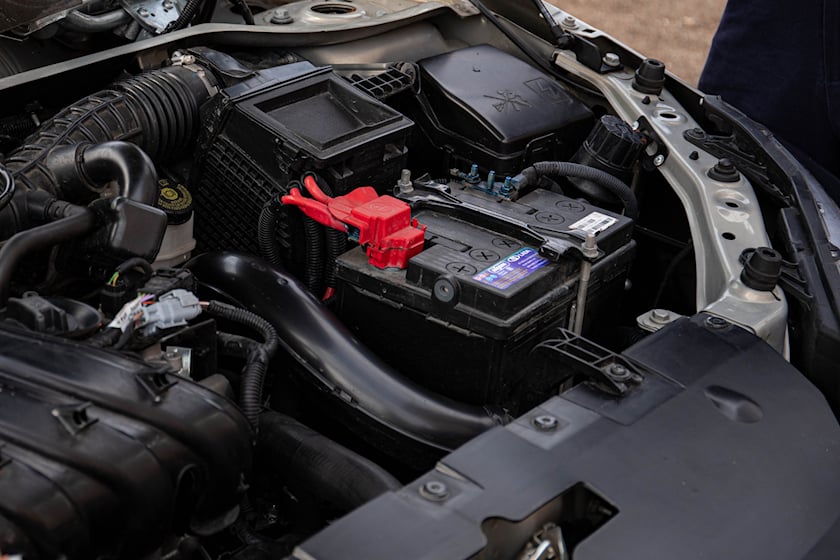What does it mean if a car is homologated and what standards does it need to meet?
Homologation refers to an approval process whereby certification is issued by a federal entity giving a certain vehicle permission to be sold in a specific market. At the same time, the definition of homologation can also refer to the process of getting cars accredited to compete in motorsport events. Both instances require the vehicle to adhere to specific regulations and technical standards, with market-related homologation requiring the vehicle to undergo stringent testing, too.
In short, the homologation of a car means that a vehicle meets the homologation rules of a particular market, whether it be commercial vehicles or something a little more specialized. These rules are generally set by the automotive authority of a specific region. This is not the same as a 'homologation car' or a 'homologation special', however - read on to find out more.
In the United States, the Federal Motor Vehicle Safety Standards (FMVSS) is the set of vehicle regulations in the USA that specifies construction, design, performance, and durability requirements for automobiles and related components and systems. These can be found in Title 49 of the Code of Federal Regulations, and are developed and enforced by the National Highway Traffic Safety Administration (NHTSA). Automakers have to adhere to these in order for a vehicle to be considered 'certified' for sale in the US.
A homologation car or a homologation special is a little different. Whenever manufacturers wish to enter their vehicles into a racing event, it has to ensure that those vehicles undergo the correct automotive homologation. These are the approval processes that govern all the aspects of motor racing. In pure racecar terms, the car and all its components need to meet the regulations of the specific league, such as the WRC, meaning the World Rally Championship.
However, when it comes to racing series that use production cars, things get a little more complicated. These vehicles need to be extremely high-performance in order to compete but are considered modified road cars, while they would technically not be driven on public roads - much like the vehicles used in NASCAR.
A homologation special, or rally specials as they are sometimes called in the world of Rally Racing, are vehicles that are heavily modified to compete, but in line with the regulations from the sanctioning entity. A homologation car or homologation special is one that has a regular street-legal version up for sale - the automaker is required to produce a certain number of road-going models in order to qualify. Not only does this encourage mainstream automakers to compete in such events, but it also helps to boost car sales.
Homologation specials usually have substantially increased power to allow incredible top speeds, and body kits and bracing for enhanced safety, amongst numerous other changes. They may look like the cars we see on showroom floors, but they aren't even nearly the same. That being said, homologation specials for all their extra bits and racing gadgetry also influence manufacturers to produce cars that enthusiasts would love.
Homologation cars like the 1967 Chevy Camaro Z/28 look nothing like the Chevrolet Camaro we know today, although the Subaru Impreza WRX STI is more familiar. Here are some examples of the coolest homologation specials in history.
The process of vehicle homologation is exceedingly complex and can be quite tedious. While every country has its own governing authority when it comes to automobiles, it is the Fédération Internationale de l'Automobile (FIA) that regulates motorsports and provides general guidelines for every other authority when it comes to motor vehicle safety.
By looking at the FIA's list of homologation cars, you can find:
Automotive homologation is the process of certification of a vehicle when it meets the specific standards and requirements of the market it wishes to enter. When it comes to homologation for racing, a homologated car is a vehicle that meets an agreed-upon standard for the specific racing application.
Every region has its own homologation requirements, governed by its automotive authority, such as the FMVSS in the US, the CMVSS in Canada, the ADR in Australia, and the EU regulations for many EU countries. These are then further divided according to the type of homologation. For most motorsports, the FIA regulations supersede others.
When it comes to automotive racing, the FIA handles most of the regulations. It places restrictions on the type of vehicles, racetrack components, and standardized car parts that may be used. All of these must be met for a vehicle or racetrack to be certified for use in motorsports. In some cases, homologated specials for racing need to have a certain number of production cars available for sale in order to qualify.



